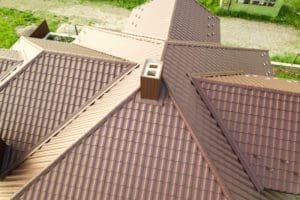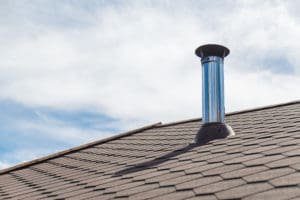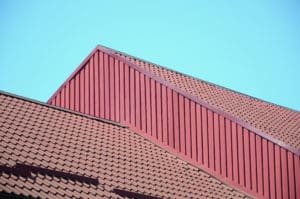Introduction to Gutter Solutions for Your Property
Gutters are key to keeping your home in good shape. They move rainwater away from your house, preventing damage to your foundation, siding, and landscaping. Without gutters, your property could face serious water damage, especially after heavy rain. There are different gutter types and materials, each with its benefits and costs. For instance, aluminum gutters are popular due to their durability and affordability, while copper gutters are prized for their long lifespan and unique look but are pricier. Picking the right gutter solution hinges on your budget, the climate of your area, and the style of your property. By choosing wisely, you can protect your home and enhance its appearance at the same time.
Understanding Different Types of Gutter Solutions
When it comes to managing rainwater for your property, not all gutter solutions are created equal. There are several types to consider, each with its benefits and potential drawbacks. Let’s break it down into simpler terms.
First, there are sectional gutters. These are what most people have on their homes. Made in sections and pieced together, they’re fairly straightforward to install. The downside? They can leak at the seams over time.
Then, you’ve got seamless gutters. As the name suggests, these are made in one continuous piece, custom-fit to your home. They’re less likely to leak since there are no seams, but they require professional installation.
Material-wise, you have a few choices—aluminum, vinyl, steel, and copper are the most common. Aluminum is lightweight and doesn’t rust, making it a popular choice. Vinyl is the most affordable and also rustproof but might not hold up in very cold climates. Steel is sturdier but can rust over time. Copper looks great and lasts a long time, but it’s pricier.
Also, consider the size and shape—K-style gutters are the most common and can handle more water, making them suitable for many climates. Half-round gutters have a more traditional look and work well in places with heavy rain.
Each type has its place, depending on your budget, climate, and the look you’re going for. Choosing the right gutter solution means balancing these factors to find the best fit for your property.
Factors to Consider When Choosing Gutter Solutions
When picking gutter solutions for your home, it’s not just about picking any gutter and slapping it on your roof. You need to consider a few critical factors to ensure you’re making the best choice for your property. First, think about the material. Gutters come in various materials like aluminum, steel, vinyl, and copper. Each has its pros and cons in terms of durability, maintenance, and cost. Aluminum gutters are lightweight and resistant to rust, while copper gutters are super durable and can boost your home’s aesthetic appeal but tend to be pricier. Next, size matters. The size of your gutters needs to match the rainfall intensity of your area and the size and slope of your roof. If you get this wrong, you might end up with gutters that overflow during heavy rains or are unnecessarily bulky. Also, pay attention to the gutter style. The common K-style gutters can hold more water than half-round ones, making them suitable for rainy areas. Lastly, consider whether you want to DIY or hire a pro. Installing gutters can seem simple, but for a durable and correctly sloped installation, sometimes it’s better to call in the experts. Make these choices wisely to keep your home safe from water damage without breaking the bank or ruining your weekends with constant upkeep.
The Importance of Size and Material in Gutter Selection
When picking gutters for your property, don’t overlook the importance of size and material. Here’s why:
First up, size matters. The right size gutter deals effectively with the amount of rainwater your roof collects. A small gutter might overflow in heavy rain, while a too-large one could look awkward and cost more. Common sizes are 5-inch for standard homes and 6-inch for larger roofs.
Next, material is crucial. Gutters come in various materials, each with pros and cons. Here’s a quick look:
- Aluminum: Lightweight, rust-proof, and can be painted. It’s a popular choice but may dent.
- Vinyl: The most affordable and easiest to install. Great for DIY but might crack in cold weather.
- Steel: Stronger than aluminum and can handle more weight but can rust over time.
- Copper: Exceptionally durable and looks stunning. It’s the priciest option and develops a patina over time.
Think about the amount of rainfall your area gets and your property’s aesthetics when choosing size and material. Getting this decision right is key to efficient water management and enhancing your home’s appeal.
Gutter Guards and Accessories: Enhancing Functionality
Gutter guards and accessories may seem like small parts of the bigger picture, but they’re key to keeping your gutters functioning smoothly. The primary job of gutter guards is to block leaves, twigs, and other debris from clogging your gutters. This means less time on the ladder cleaning them out and more time enjoying your weekends. There are several types to choose from, like mesh screens, foam inserts, or reverse curve guards, each with its own set of pros and cons. Mesh screens are affordable and easy to install, ideal for the DIY enthusiast. Foam inserts fit snugly inside your gutters, catching debris while letting water flow through. Reverse curve guards are designed to direct water into the gutters while pushing leaves and debris to the ground.
On top of gutter guards, don’t overlook other accessories like downspout extensions, which help direct water away from your property’s foundation, and gutter heaters, to prevent ice dams in colder climates. Choosing the right combination of guards and accessories can significantly enhance your gutter system’s efficiency, potentially saving you money on maintenance and repairs down the line. So, consider your local environment and the specific needs of your property when selecting these additions. They’re not just add-ons; they’re investments in the longevity of your gutter system.
Professional Installation vs. DIY: What’s Best for Your Gutters?
Deciding between professional gutter installation and doing it yourself is key. Think about this – pros know the game. They’ve got the tools, skills, and know-how. They’ll get your gutters up fast and right. But, this expertise comes at a cost. You’re not just paying for labor; you’re paying for peace of mind, too. On the flip side, rolling up your sleeves and tackling the job yourself could save bucks. It’s tempting, especially if you’re handy. Yet, if you mess up, you might face leaks or damage, costing more in the long run. Also, consider safety. Working on ladders is risky. Professionals are equipped and insured against these hazards. Bottom line? If you value expertise and a guaranteed good job, go professional. Like saving money and are confident in your skills? DIY might be your path. Just weigh the risks against the rewards.
Maintenance Tips for Long-Lasting Gutter Solutions
Keeping your gutters in tip-top shape demands regular attention but pays off by steering clear of larger headaches. First off, inspect and clean your gutters at least twice a year: once in spring and again in fall. This timing is crucial as it clears the way before and after the periods when they’re most likely to get clogged, thanks to falling leaves or stormy weather. During cleaning, remove all debris, leaves, and nests. Ignoring this can lead to blockages, causing water to overflow and potentially damage your property’s foundation or siding.
Next up, ensure your gutters are firmly attached. Loose gutters can’t do their job and might lead to water damage on your home’s exterior. If you spot any section pulling away from the house, it’s time for a repair. Also, watch out for leaks. Small leaks can turn big quickly, and before you know it, you’re facing costly repairs. Seal any leaky spots you find with gutter sealant.
Don’t forget the downspouts. They direct water away from your home’s foundation, so make sure they’re directing water at least 3 feet away. If not, consider adding downspout extenders.
Finally, consider gutter guards. They can be a game-changer in reducing the amount of debris that gets into your gutters. While they don’t eliminate the need for cleaning, they can significantly lessen it.
Stick to these maintenance tips, and your gutter solutions will serve you well, keeping water damage at bay and your home in better shape.
Common Problems with Gutters and How to Solve Them
Gutters clogged with leaves? That’s just the start. The most common gutter problems include clogs, leaks, and sagging. Here’s the lowdown on fixing them.
First, clogs. They’re the worst because they stop water from flowing, making a mess. The fix? Clean your gutters regularly. You can do it yourself with gloves and a ladder or hire a pro.
Leaks usually come from holes or cracks. Small holes? No big deal. Seal them with gutter sealant. Bigger issues might need a patch or even a section replacement.
Sagging gutters? That’s from the weight pulling them down. The brackets holding your gutters might need tightening or replacing. This one might need an extra pair of hands or a professional.
Keeping an eye on these issues can save you a headache and costly repairs down the road. Regular checks and maintenance are your gutters’ best friends.
How to Estimate the Cost of Gutter Solutions for Your Property
Estimating the cost for gutter solutions means looking at a few key things. First, the material matters. Aluminum gutters are popular because they are lightweight and resist rust, costing about (4 to )8 per linear foot. Vinyl gutters are cheaper, around (3 to )5 per linear foot, but they might not last as long, especially in harsh weather. If you’re thinking about upscale options, copper gutters can hit (15 to )30 per linear foot due to their durability and look. Second, think about the size of your property. More square footage means more gutters, which means a higher cost. Third, the layout of your home can change things. If your roof is complex with lots of corners, it will require more materials and labor. Lastly, installation costs can swing based on where you live and who you hire. Remember, getting quotes from different contractors can help ensure you pay a fair price for your gutter installation or replacement.
Conclusion: Making the Right Choice for Your Gutter Needs
In wrapping up, choosing the right gutter solution boils down to understanding your property’s specific needs and balancing quality with budget. Remember, gutters aren’t just about steering rainwater away; they’re an investment in protecting your home from water damage. Don’t skimp on quality to save a few bucks now, as it could cost you more in repairs down the line. Whether it’s seamless, vinyl, or copper gutters, pick what best fits your home’s architecture and your local climate. And, always hire a reputable installer; this makes a huge difference in how well your gutters perform and last. So, take your time, do your homework, and make a choice that you’ll be satisfied with for years to come. After all, a wise decision today can save you a lot of hassle and money in the long run.






